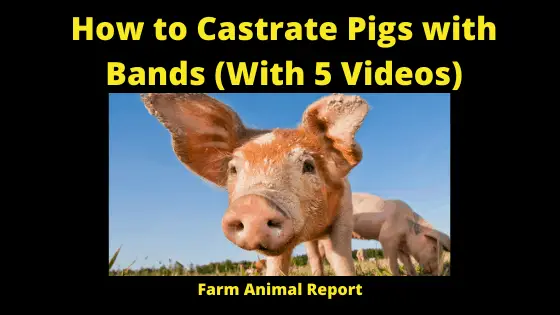How to Castrate Pigs with Bands
Introduction Boar Taint / Castration
How to Castrate Pigs with Bands – Castration in males consists of the removal of the testes or the inhibition of testicular function. Although the prevalence of castration in pigs varies from country to country, it is generally a routine practice that is performed surgically without anesthesia in the first week of a piglet’s life.
The main purpose of castration in pigs is to prevent boar taint, which is present in the meat of some entire males once they reach puberty. Other benefits of castration include: preventing unwanted reproduction in extensive systems, reducing aggressive and mounting behavior with their resulting injuries, and the possibility of producing a higher-quality end-product.
See Amazons Educational Resources for Raising Pigs
Boar taint: Androstenone and Skatole
Lower amounts are found in females and castrated males than in entire males. While skatole can be partially controlled by diet, androstenone inhibition is only achieved by castration or inhibiting the luteinizing hormone (LH) function. How to Castrate Pigs with Bands
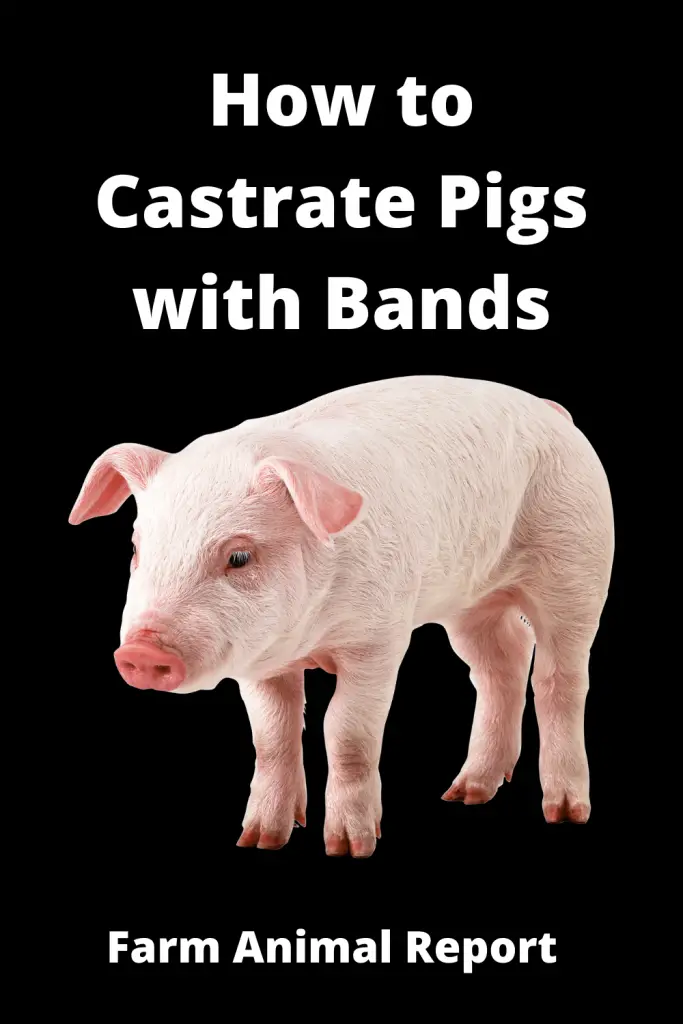
Why Unpleasant Aromas Occur / Boar Taint
As male pigs approach puberty, they begin developing two naturally occurring compounds that can cause an unpleasant aroma in cooked pork. This off-odor is technically referred to as “boar taint.” These natural off-odors create no food safety issues but need to be controlled to protect the quality experience of eating pork.
- The two compounds are androstenone and skatole. They can accumulate in the fatty tissue of male pigs and are released when the pork is cooked causing the unpleasant aroma.
- Depending on age, breed, and environment, as many as 50% or more of all intact male pigs produce pork that has a strong to moderate off an odor when cooked.
The Biology of Off Odors
Two compounds, androstenone, and skatole occur naturally in male pigs as they mature. If not controlled, they can create off-odors in cooked pork. Androstenone acts as a pheromone in the boar as it is released in the saliva and other fluids.
See Our Extensive Guide – 13 Ways to Make Money Pig Farming
Economic forces drive the slaughter weights higher, it takes about the same labor to process a 300 lb. pig as a 220 lb. pig so labor costs per pig decrease with higher slaughter weights. If pigs were marketed at, say 200 lb. as the do in Britain, then the males would not have to be castrated. But with market weights in the USA much higher, castration is required to prevent Boar Taint.
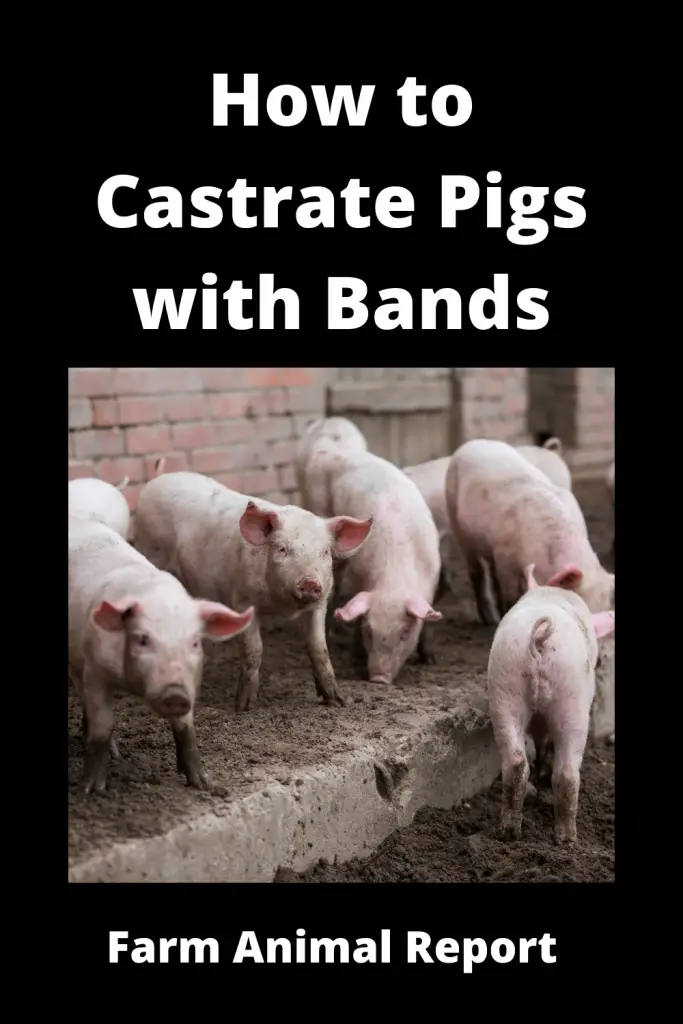
Methods of Castration in Pigs
Elastration (Rubber Band)
Elastic rubber bands can be used on the pig due to the shape and position of the testes in the male. Elastration involves restraining the animal, without the need for anesthesia or sedation (unlike most other castration methods), in a position that provides access to the genitals.
Special elastrator pliers are then used to place a tight latex(rubber) elastrator ring gently around the base of the scrotum this cuts the blood supply to the scrotum and testicles, which will totally decay and slough off within a few weeks. Care must be taken during the procedure to ensure that both testicles are fully descended and properly located inside the scrotum and that the animal’s nipples are not included within the ring.
Elastration is normally limited to castrations done during the first few weeks of life, and it cannot be used for species where the scrotum does not have a narrow base, such as pigs.
Rearing of Entire Males
Rearing entire (uncastrated) males are common in the United Kingdom and Ireland, where pigs are normally slaughtered before they reach puberty, with a carcass weight of about 75 kg. A future alternative may be the genetic selection for animals with low boar taint.
Immuno-castration
With immuno-castration (through injection of a vaccine prior to slaughter), the pig is immunized against gonadotropin-releasing hormone (GnRH). This immunization inhibits the synthesis of LH, which, in turn, inhibits testosterone secretion and testicular function and development.
Chemical Castration
Chemical castration consists of injecting chemicals (such as lactic acid or zinc salts) into the testicles, causing local destruction of testicular tissue. In terms of welfare, it is difficult to draw definitive conclusions as further research is required to determine how painless the practice is.
Breeding Females: Sperm Sexing
Sperm sexing consists of inseminating sows with sexed sperm so that they produce only female offspring. While sperm sexing may prove to be a good solution in the long term, it is not yet viable in practice.
Surgical Castration
Surgical castration of piglets is the usual practice. Typically, two incisions are made in the scrotum, the testes are freed from the surrounding tissue and taken out and discarded after severing the spermatic cord. While tearing is contraindicated, bleeding may be reduced by the use of an emasculator to crush the spermatic cords shut for a few seconds.
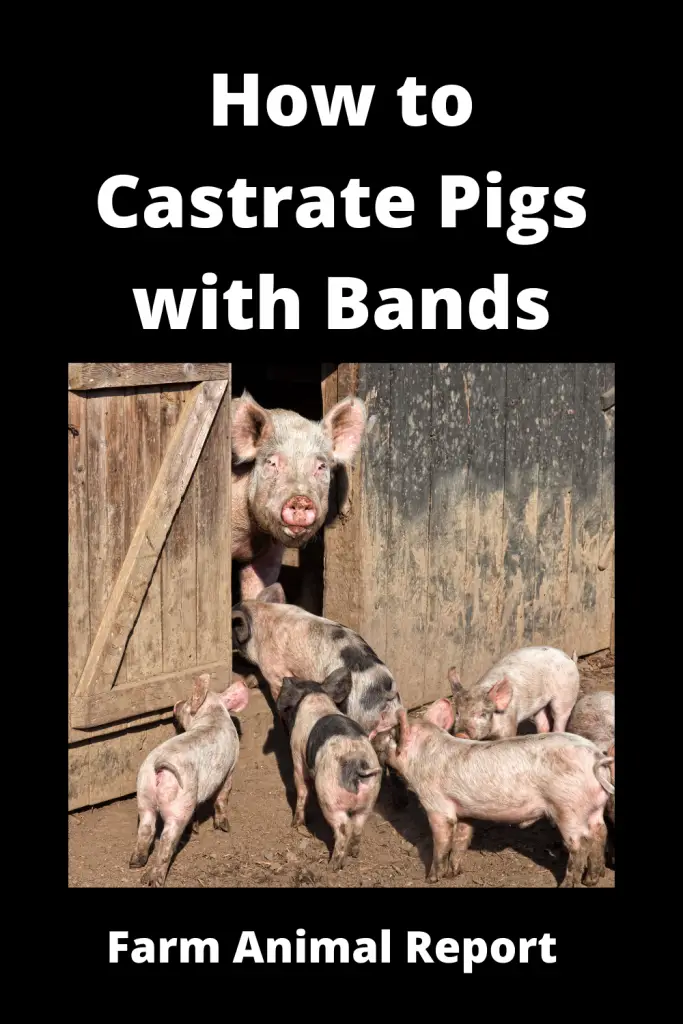
Surgical castration without anesthesia or analgesia is considered to be a painful and stressful procedure, as evidenced by a series of physiological and behavioral changes that are clearly indicative of pain and stress. The procedure causes immediate pain which then becomes chronic, lasting for up to 5 days.
Although scrotal incision involves acute, well-localized cutaneous pain, the most painful part of castration seems to be the extraction of the testes and severing of the spermatic cord, which produces a dull, diffuse, poorly localized, visceral pain.
During castration, physical resistance by the piglet, increased heart rate, and high-frequency (>1 KHz) squealing are reliable indicators of pain. One study showed that castrated piglets aged 3, 10 and 17 days produced a larger number of squeals than restrained, non-castrated animals (sham group).
The number of squeals was also greater in piglets at 10 and 17 days of age than in piglets at 3 days of age. These data suggest that surgical castration without anesthesia is painful at any age. Following castration, the concentrations of the hormones ACTH and cortisol, which are indicators of pain and stress, are 40 and 3 times higher respectively, than their baseline levels.
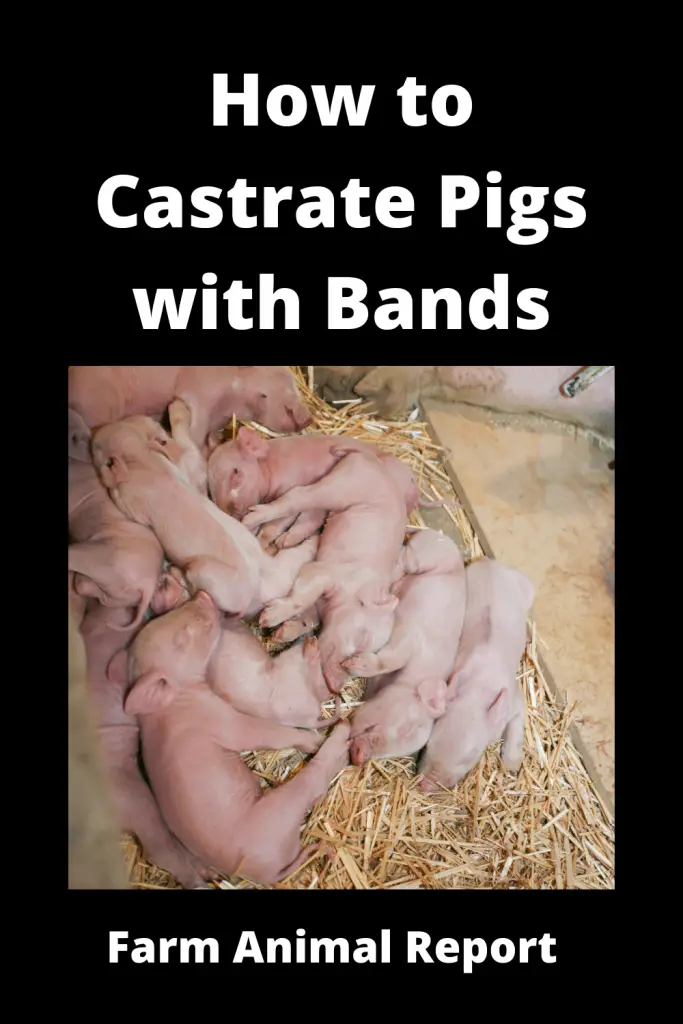
Animals castrated without anesthesia are less active than uncastrated ones. Specifically, there is a clear reduction in play behavior and in piglets’ activity at the teat. Moreover, castrated piglets show specific signs of pain, such as turning their heads towards the affected area or scratching their hindquarters on the ground. Surgical castration without anesthesia can also negatively affect the animal’s growth, immune system, and health.
Post-surgical complications can include, among others, hemorrhages and excessive swelling, especially if the spermatic cords are severed but not crushed.
Methods for Minimizing and Controlling Pain
A combination of anesthesia and analgesia can be recommended to alleviate pain associated with surgical castration. General anesthesia does not appear to be routinely applicable on farms since the piglets take a long time to recover. As they remain lethargic and have a low body temperature throughout the recovery period, this can lead to a high piglet mortality rate.
A good alternative appears to be local anesthesia with lidocaine, injected either directly into the testicles or subcutaneously in the scrotum. A nonsteroidal anti-inflammatory drug (NSAID) should be administered to alleviate post-surgical pain. For instance, the administration of meloxicam prior to castration has been shown to reduce postoperative pain.
Moreover, given that the animals may experience chronic pain for up to 5 days, the possibility of prolonging the analgesic treatment should be considered.
World Pig Breeder Associations
| Pig Association | Location | Link |
|---|---|---|
| National Swine Registry | United States | NSR |
| American Berkshire | Illinois | AB |
| Livestock Conservancy | North Carolina | LC |
| American Mini Pig Association | United States | AMPA |
| Southern California Association of Pot Bellied Pigs | California | SCAPBP |
| British Pig Association | UK | BPA |
| National Pig Association | UK | NPA |
| Canadian Swine Breeders Associations | Canada | CSBA |
| Australian Pig Breeders Associations | Australia | APBA |


